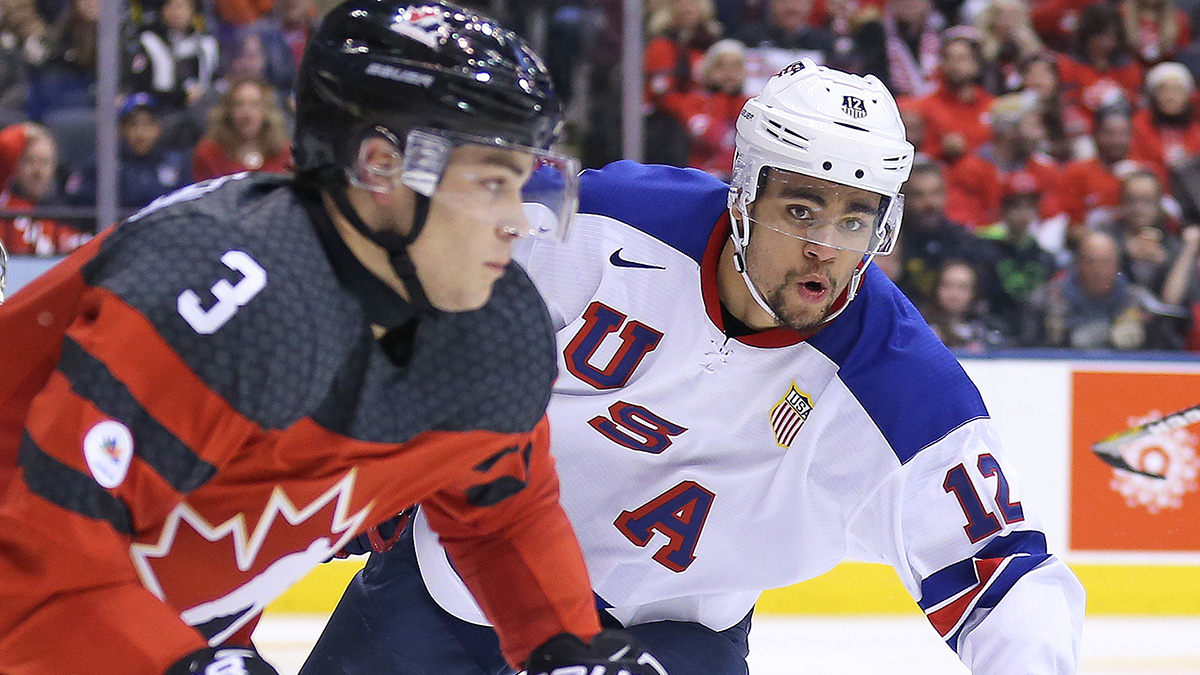What is the Color of Hockey?

For the past five years, William G. Douglas has blogged about a swimming duck.
He isn’t writing about a literal bird. Instead it’s a metaphor for an issue that not many people consider.
Douglas is most known for his political reporting for the McClatchy news service in Washington, D.C. But in his limited free time, the 60-year-old father and recreational goaltender has spent half a decade writing for his blog, The Color of Hockey.
Compared to the other major professional sports, ice hockey is not as colorful – the majority of players, coaches, executives and broadcasters are still white. The demographics of ice hockey fans closely match the rosters in the National Hockey League, with about 8 percent of fans identifying as black or Latino, according to demographicpartitions.org.
The evident lack of racial diversity in the fourth-most popular sport in the United States brings the question of “why?” That’s where Douglas’s unique blog sheds light on this “duck” of an issue.
“You’re seeing this duck just cruising and looking effortless, but under the water you don’t see their legs sort of kicking and churning feverishly,” Douglas said. “I think that’s what you’re seeing with minorities in hockey…it’s a slow roll, but the numbers are getting better.”
From U.S. Congress discussing Willie O’Ree’s induction into the Hockey Hall of Fame to Jordan Greenway being the first African-American on the U.S. Olympic hockey team, the hundreds of posts on the blog have continued to document what’s happening under the white surface of ice hockey.
“A lot of people will look at the NHL and they’ll say ‘Oh, there’s only 28 black players in the National Hockey League’ but they’re not looking at the leagues below the NHL,” Douglas said. “They’re not looking at the AHL; they’re not looking at the Canadian Hockey League; they’re not looking at colleges; they’re not looking at kid’s leagues like the Greater Toronto Hockey League, where you’re seeing more black and brown kids, you’re seeing more kids from South Asia, [and] Punjabi kids taking up the game out in Western Canada.”
Each NHL team has an active roster comprised of 23 players, which totals to 713 active players on 31 different teams during season. The 28 black players mentioned by Douglas represent about 4% of active NHL players – and Canadians make up the majority of that small percentage. Seventeen of the 28 black players are Canadians, according to Wikipedia. In comparison, there are only six American-born black players and five of European nationalities.
Kenneth Shropshire, CEO of the Global Sport Institute and Adidas Distinguished Professor of Global Sport at Arizona State University who wrote In Black and White: Race and Sports in America, said it’s important to analyze diversity in the sport through a wider lens.
“It’s an ongoing problem and it will probably be a continuing problem, but I think a lot of it has to do with culture and tradition,” Shropshire said.
Douglas said the blog is meant to educate, because if people understand the bigger picture – the history and impact of players of color - then they can develop understanding and acceptance of the developing diversity.
“With this blog I hope to reach out to hockey fans and players of color – and hockey fans in general – who love this sport and who enjoy witnessing the evolving face of a game that’s beginning to reflect the changing demographics of the United States and Canada,” Douglas wrote in his first post on Dec. 12, 2012.
The exclusivity of the blog lies in Douglas’s continued dedication to covering an issue that fades in and out of headlines. Scott Strande, who reports for Ice Time Hockey SW, said it’s like when someone you know gets cancer; the first thing you do is start a GoFundMe page and raise awareness.
“It’s been there all along – nobody does anything until it touches them,” Strande said.
Playing hockey since he was 13 led Douglas to become a fan of the NHL, but five years ago he witnessed a racial incident that caused him to take action.
“It was born of the Stanley Cup playoffs series in 2012 between the Washington Capitals and the Boston Bruins,” Douglas told The New York Times in February 2018. “In that series, the Capitals forward Joel Ward…scored the Game 7 overtime goal that eliminated the Bruins from the playoffs. The goal unleashed a torrent of racist social media posts aimed at Ward, who is black, from so-called Bruins fans. I had thought that we were beyond that in hockey, but I was wrong.”
That wasn’t the only recent incident. Days after that New York Times story was published, Chicago Blackhawks fans were removed from their seats after chanting “basketball, basketball, basketball” to Washington Capitals forward Devante Smith-Pelly while he sat in the penalty box.
Despite this, Douglas said that 99 percent of the responses to the blog have been positive.
To his surprise, some have even commented that he’s chronicling history.
“I have no plans to stop,” Douglas said.
Kylee Meter is a junior sports journalism major at Arizona State University

